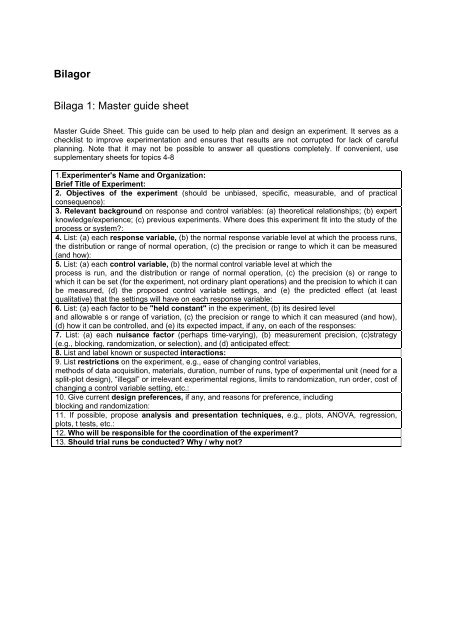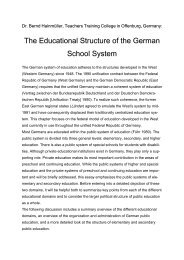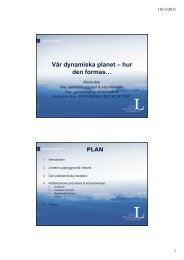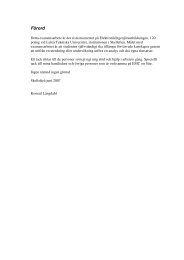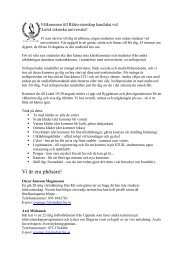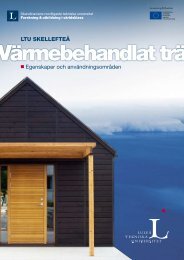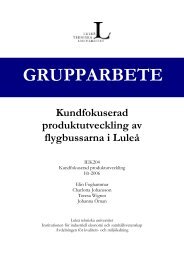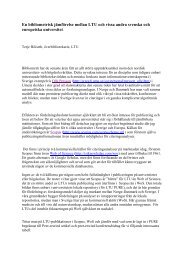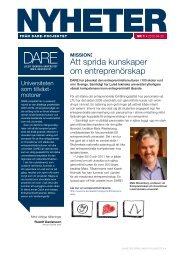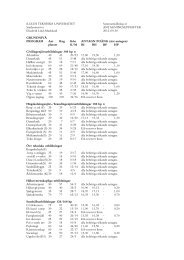Försöksplanering - Luleå tekniska universitet
Försöksplanering - Luleå tekniska universitet
Försöksplanering - Luleå tekniska universitet
Create successful ePaper yourself
Turn your PDF publications into a flip-book with our unique Google optimized e-Paper software.
Bilagor<br />
Bilaga 1: Master guide sheet<br />
Master Guide Sheet. This guide can be used to help plan and design an experiment. It serves as a<br />
checklist to improve experimentation and ensures that results are not corrupted for lack of careful<br />
planning. Note that it may not be possible to answer all questions completely. If convenient, use<br />
supplementary sheets for topics 4-8<br />
1.Experimenter's Name and Organization:<br />
Brief Title of Experiment:<br />
2. Objectives of the experiment (should be unbiased, specific, measurable, and of practical<br />
consequence):<br />
3. Relevant background on response and control variables: (a) theoretical relationships; (b) expert<br />
knowledge/experience; (c) previous experiments. Where does this experiment fit into the study of the<br />
process or system?:<br />
4. List: (a) each response variable, (b) the normal response variable level at which the process runs,<br />
the distribution or range of normal operation, (c) the precision or range to which it can be measured<br />
(and how):<br />
5. List: (a) each control variable, (b) the normal control variable level at which the<br />
process is run, and the distribution or range of normal operation, (c) the precision (s) or range to<br />
which it can be set (for the experiment, not ordinary plant operations) and the precision to which it can<br />
be measured, (d) the proposed control variable settings, and (e) the predicted effect (at least<br />
qualitative) that the settings will have on each response variable:<br />
6. List: (a) each factor to be "held constant" in the experiment, (b) its desired level<br />
and allowable s or range of variation, (c) the precision or range to which it can measured (and how),<br />
(d) how it can be controlled, and (e) its expected impact, if any, on each of the responses:<br />
7. List: (a) each nuisance factor (perhaps time-varying), (b) measurement precision, (c)strategy<br />
(e.g., blocking, randomization, or selection), and (d) anticipated effect:<br />
8. List and label known or suspected interactions:<br />
9. List restrictions on the experiment, e.g., ease of changing control variables,<br />
methods of data acquisition, materials, duration, number of runs, type of experimental unit (need for a<br />
split-plot design), “illegal” or irrelevant experimental regions, limits to randomization, run order, cost of<br />
changing a control variable setting, etc.:<br />
10. Give current design preferences, if any, and reasons for preference, including<br />
blocking and randomization:<br />
11. If possible, propose analysis and presentation techniques, e.g., plots, ANOVA, regression,<br />
plots, t tests, etc.:<br />
12. Who will be responsible for the coordination of the experiment?<br />
13. Should trial runs be conducted? Why / why not?


